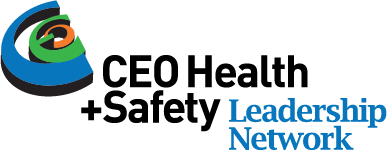Imagine approaching a salesperson for assistance with buying a computer, only to be handed a flyer and left to your own devices. You’d likely go elsewhere to find a salesperson who was perhaps not an expert on computers but could at least share valuable insights and offer information about available options.
In organizations with an Employee and Family Assistance Program (EFAP), employees often get the flyer. They don’t receive the insight and information they need to understand the options available to them through the program.
The report Employee Health and Wellbeing from Benefits Department to the Boardroom, published by the Josh Bersin Academy, highlights this reality. “According to a recent study, 58% of organizations report that their employees are unaware of the health benefits to which they are entitled. Accessing benefits can also be difficult, since employees often have to dig through corporate portals or unfamiliar sites to take advantage of them. This often leads to employee populations that underutilize their health benefits and feel isolated and frustrated by the complexity of the process. This in turn leads to some far-reaching negative effects for employers and employees, including higher overall healthcare costs, poorer employee health, and lower productivity.”
When an employee is experiencing a mental health problem and needs support, they may not have the capacity to sift through pamphlets and websites to find the help they need. And, sadly, 70 percent of them won’t seek help because of self and perceived organizational stigma. As a leader, you have the power to build confidence and encourage help-seeking behaviours by sharing practical information about the program before it is needed.
Employee and family assistance programs work
Morneau Shepell’s 2020 Workplace Outcome Suite annual report makes the business case for EFAPs clear. In analyzing cases at the start of counselling and then again after three months, the study found:
- 56 per cent reported that their issue was making it difficult to concentrate on work. After counseling, this was reduced to 28 per cent of all cases.
- 37 per cent reported dissatisfaction with life overall, indicating a level of clinical distress. After counseling, the rate was reduced to 16 per cent of all cases.
- 32 per cent reported not being engaged in their work. After counseling, the rate of all cases was reduced to 23 per cent.
- 29 per cent missed a half day or more of work time. After counseling, this was reduced to just 13 per cent of all cases.
- 22 per cent reported feelings of dread when going to the workplace ("workplace distress"). After counseling, this rate was reduced to 13 per cent of all cases.
Promoting the EFAP is not only the right thing to do, it is a wise thing to do for your business. The Morneau Shepell study also revealed that the estimated ROI for small employers was 3:1, 5:1 for medium-sized businesses, and 9:1 for large employers in the US. Cost savings ranged from $2,000 to $3,500 per employee due to reductions in presenteeism (being physically at work but mentally absent) and absenteeism.
Tell employees about all the services that are available
While mental health management and counselling are still the leading reasons that employees tap into EFAPs, there are many other supports and services available. Depending on the package you purchase, programs can include financial, legal, parenting, nutrition and elder care support, marital counselling, resources for chronic disease management, and much more. Many include online courses and education sessions for prevention and intervention, as well as bundles for depression care, PTSD and critical incident support, and manager resources.
Don’t make them dig
Most providers offer employers and employees coaching on how to access the EFAP. However, you may want to take one step further. Ask employees what questions they have about the program. You may find they have specific questions that you can help with, such as:
- How many sessions employees get for a legal or relationship issue
- How they can access support (text, online, in-person)
- How much the employer covers for legal or financial support
- What qualifications the mental health counsellors have
- How the intake process works
- How long it takes to get the first appointment
- How employees can provide feedback on the process
Talk openly and share your personal experience with the EFAP
Make sure to weave information about the EFAP into regular meetings and discussions. If an employee is reluctant to call for support through the program, this may help nudge them in the right direction. Also, ask your employees how they would like you to provide support if or when it is needed. For example, you might ask, “If I am worried about you, based on something you’ve shared with me or behaviour/changes I’ve observed, how do you suggest I encourage you to call EFAP to get support?” These kinds of questions can break down stigma and help you increase use of the EFAP.
Open conversations will also help debunk common misperceptions that confidential information will be shared or accessing EFAP will negatively impact performance reviews.
On top of explaining what is available and how to access the program, you may want to share your own experience. You don’t have to reveal details, just let employees know if you’ve accessed the services and found them helpful. This will help demystify EFAP and build the trust and credibility needed to encourage help-seeking behaviours among your employees.
Don’t wait for a crisis
The first time an employee hears a leader talk about EFAP should not be when they are in crisis. Talking about the program regularly and openly, including firsthand experiences if possible, can dramatically increase the likelihood that an employee will get the support they need instead of struggling in silence.
With a proactive approach, you create a workplace environment where no employee is simply handed a flyer.

 Fresh Communications in collaboration with WSPS
Fresh Communications in collaboration with WSPS



